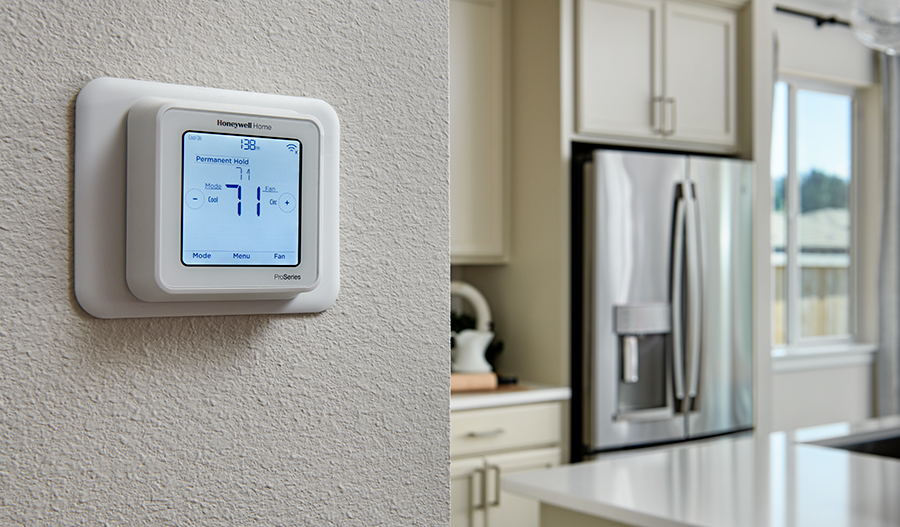When was the last time you thoroughly reviewed your utility bill? If you’re only focused on the “AMOUNT DUE,” you could be missing out on key insights that could help reduce both your energy waste and monthly expenses. While each utility provider has its own way of formatting your bill, there are several key elements that, when analyzed, can help you identify opportunities to cut down on energy consumption. Understanding these details and making small but meaningful adjustments could result in long-term savings, making your home more energy-efficient and reducing your carbon footprint. Here are six tips for how to use your utility bill to make meaningful changes at home:
1. Examine meter readings

One of the most critical components of your utility bill is the meter reading. This typically includes both the current and previous month’s readings, which can be either estimated or actual. The difference between these readings represents your energy consumption for the billing period. For electricity, usage is usually measured in kilowatt-hours (kWh), and for natural gas, it’s measured in “therms.”
By carefully monitoring these figures, you can track your energy usage and identify patterns. If you notice unusual spikes in your energy consumption, it might be a signal of inefficiencies within your home. For example, seasonal changes, such as the need to use heating or cooling systems during colder or warmer months, often lead to higher energy bills. However, unexplained increases, even when the weather has been consistent, could point to deeper issues.
Common culprits of unexplained spikes in energy usage might include aging or inefficient appliances, poor insulation, malfunctioning HVAC systems, or even improperly sealed doors and windows. If you notice a repeated increase in your energy usage despite no changes in behavior, consider conducting a home energy audit to identify and correct these inefficiencies. Identifying the source of excess energy consumption is crucial in taking steps to reduce waste.
2. Monitor energy usage rates
Another key part of your utility bill to pay attention to is the rate section, which tells you how much you are paying per unit of energy used. Energy rates can fluctuate, and some utilities offer different pricing structures based on the time of day. A common example is a as time-of-use rate plan, where electricity costs more during peak hours (usually daytime) and less during off-peak times (typically at night or on weekends).
If your utility provider offers a time-of-use plan, you can reduce costs by shifting high-energy activities (like running the dishwasher or washing clothes) to off-peak hours, usually during the night or weekends. Additionally, understanding how your rate compares to national trends can help you identify if you’re being overcharged. If your provider’s rates are unusually high, it might be worth exploring alternative providers or renegotiating your plan.
Furthermore, investing in energy-efficient upgrades such as LED lighting, smart thermostats, and energy-efficient appliances can lower your overall energy consumption. These upgrades may come with upfront costs, but in the long term, they can lower your energy bills and offset the initial investment. Be sure to regularly compare your energy rates with the current market and explore options to minimize your costs.
3. Look at patterns in your usage history

Many utility providers offer a comparison of your energy use over the current season or year-to-date, along with historical data for the same period in previous years. This comparison can be extremely valuable for spotting trends and detecting inefficiencies. For instance, many bills will show a graph of your monthly usage, allowing you to see whether you are using more energy than you did last year or over the past few months. This historical data can help you identify specific times of year when your energy consumption tends to spike, and it can point out changes in usage that might have gone unnoticed.
If your energy consumption has increased compared to last year, this could point to inefficiencies in your home. For example, if your air conditioning or heating systems are running more often due to poor insulation, it might be time to explore maintenance options. If you notice an unusual rise in usage even when you haven’t changed your habits, your home may have hard-to-pinpoint inefficiencies, such as drafty windows.
4. Be cognizant of fees

Your utility bill may contain various fees that could be increasing your overall charges. For example, you might see items like “Transmission Charges,” “Franchise Fees,” or “Electric Commodity Adjustments” listed on your statement. These fees, while sometimes confusing, can add up to a significant portion of your bill, and it’s essential to understand what you’re being charged for.
If you notice any unexpected fees or if your bill shows an unexplained increase in these charges, reach out to your utility provider for clarification. There might be an error, or you may be on an outdated plan. In some cases, switching to a different rate plan or adjusting your energy usage habits could help lower these additional fees. Furthermore, many utility providers offer incentives or rebates for customers who upgrade to energy-efficient appliances or make home improvements that reduce energy consumption. If you haven’t already, it’s worth checking if you qualify for any such programs. You might be able to offset some of the costs of home improvements or new appliances through these savings.
5. Make strategic adjustments
Once you understand the components of your bill, it’s time to take action. Start by tracking your monthly energy consumption, focusing on patterns of usage and areas where inefficiencies may exist. After implementing potential energy-saving changes, use your future utility bills to track improvements and measure the success of your efforts. Here are a few steps you can take around the house to start saving energy:
Upgrade insulation: Insufficient insulation in areas like attics and walls can cause your home’s heating and cooling systems to work harder. Adding or upgrading insulation can help maintain a consistent temperature inside your home, reducing the need for constant heating or cooling. Look into areas that might need additional insulation, such as around windows, doors, or in your attic.
Seal leaks: Drafty windows and doors can cause your home’s temperature to fluctuate, making your heating and cooling systems work harder. By sealing gaps around your windows and doors, you can significantly reduce your heating and cooling costs. Weatherproofing your home is a cost-effective way to save energy.
Switch to energy-efficient appliances: Replacing older, inefficient appliances with ENERGY STAR®-rated products can significantly reduce energy consumption. These appliances use less electricity or gas to accomplish the same tasks, helping you save money in the long term. Consider replacing old refrigerators, washers, dryers, and lighting with newer, more efficient alternatives.
Install a smart thermostat: A smart thermostat can help you control your home’s temperature more efficiently by adjusting the settings based on your schedule and habits. For example, a smart thermostat can reduce heating or cooling when you’re not home or when you’re asleep, cutting down on energy waste. Many smart thermostats can be controlled remotely, allowing you to adjust the temperature before you get home.
Use LED lighting: LED stands for “Light Emitting Diode,” and these bulbs are up to 90% more energy-efficient than conventional incandescent bulbs. They produce electricity via a microchip, which energizes tiny light sources that produce illumination.
Use energy monitors: Consider using plug-in energy monitors that track the energy consumption of individual appliances. These devices can help you identify “energy vampires”—appliances or electronics that draw power even when not in use. By unplugging these devices or using a power strip to easily cut off power when not needed, you can save energy and lower your bills.
6. Consider a newer, more energy-efficient home
Today, the vast majority new homes are typically built with energy efficiency in mind. With modern construction techniques and materials, new homes typically have better insulation, more efficient heating and cooling systems, improved lighting, and higher-performing appliances than older, resale homes. If you’re considering buying a brand-new home, these built-in efficiencies may help lower your energy bills from the get-go!
Regardless of your home’s age, by carefully analyzing your utility bill and understanding the different components, you can identify opportunities to reduce your energy consumption, lower your bills, and make your home more efficient. Small, strategic changes—such as upgrading insulation, switching to energy-efficient appliances, swapping out outdated light bulbs, or changing your energy usage habits—can have a significant impact over time.
In addition to saving money, taking these steps will help you reduce your carbon footprint and contribute to a more sustainable future. Whether you live in a newly built home or an older one, there are always opportunities to improve your home’s energy efficiency. So, the next time you review your utility bill, take a moment to examine the details and consider making the changes that could lead to long-term savings and a greener future!
Get a room-by-room floor plan lifestyle guide!
Whether you’re new to house hunting or you’ve owned before, finding the right floor plan can be a challenge. This guide may help streamline your search for your next home.





